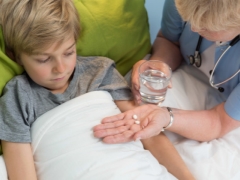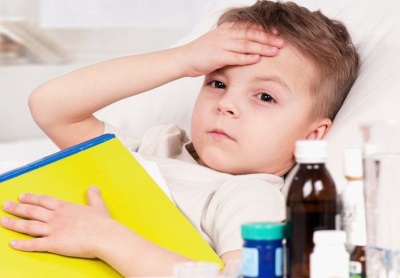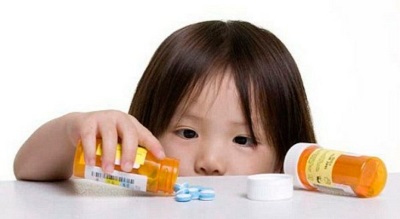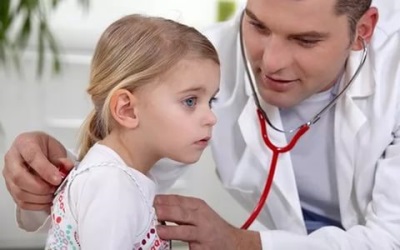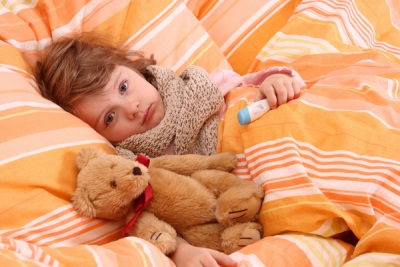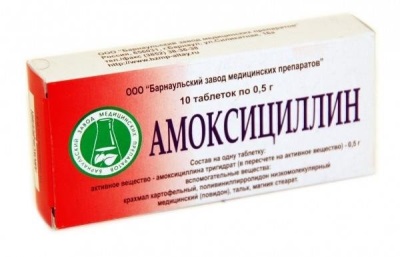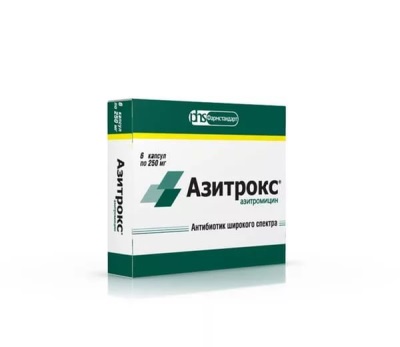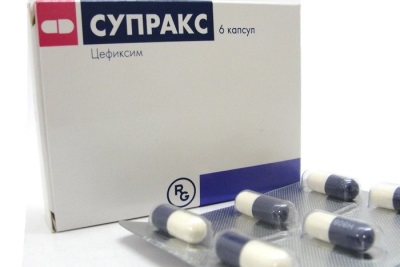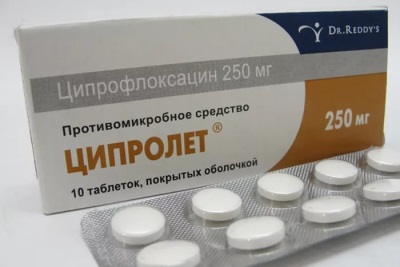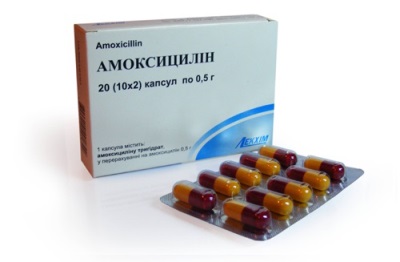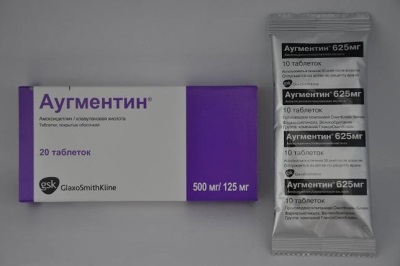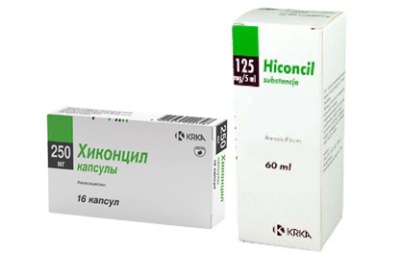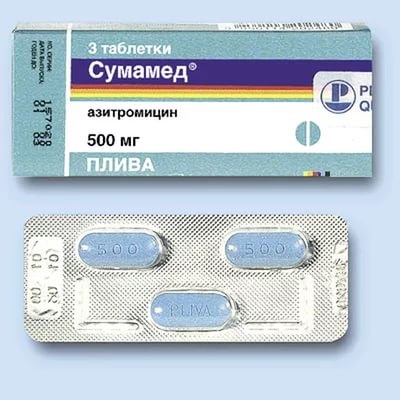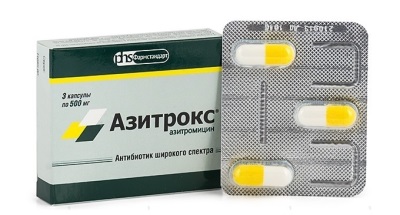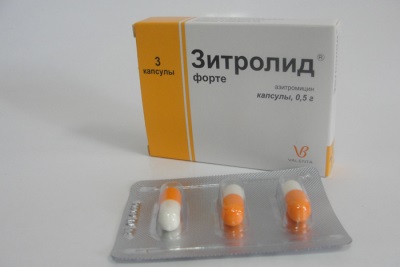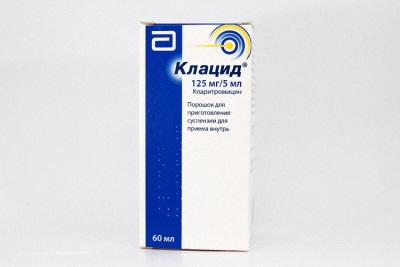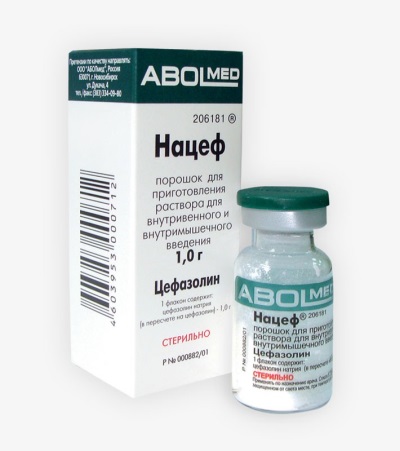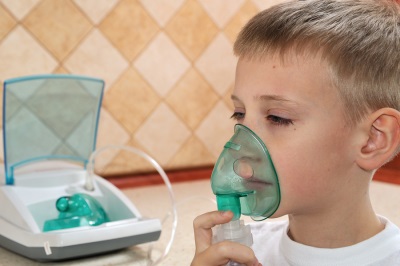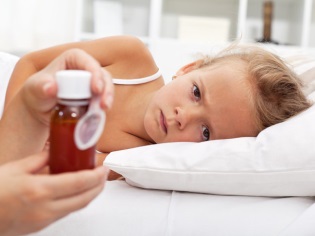Antibiotics for bronchitis in children
Antibiotics for children with bronchitis are often prescribed, and this causes a lot of questions from parents. After all, the Internet is replete with information that, as a rule, the cause of the appearance of bronchitis are viruses, and antibiotics are designed to fight bacteria.
Indeed, antibiotics need to treat bacterial infections, and antiviral medications help defeat the viral ones. All this is true, but in relation to bronchitis, everything is not so clear. Let's try to figure out whether antibiotics are necessary for a child with bronchitis, is their use justified, can they cure this disease?
Bronchitis - viral or bacterial?
To answer the question of whether antibiotics are needed in the treatment of children's bronchitis, you need to know what kind of "pests" provoke this dangerous disease. In 50-60% of all episodes of children's bronchitis, the disease is provoked by viruses: rhinovirus, adenovirus, and most often - the virus flu. What happens next is not difficult to imagine. The immune protection of the child’s body is destroyed and very favorable conditions are created for the vital activity of the pathogenic bacteria. So the disease "flows" into the category of bacterial, secondary bacterial infection joins the primary viral.

In 20% of cases, bronchitis is of bacterial origin initially. A child becomes ill when all kinds of “cocci” - staphylococcus, streptococcus, pyocyanic bacillus, hemophilus bacillus, moraxella penetrate into his body (in the airways in particular). In about 15% of cases, bronchitis is caused by fungi, and about 5% of cases are caused by so-called atypical organisms - chlamydia, mycoplasma. These "pests" are insidious - they are interesting forms of life, a cross between bacteria and viruses. Such bronchitis overgrown with the adjective "atypical".
The choice of drugs for treatment
Since almost any bronchitis can be retrained sooner or later into the bacterial form, antibiotics are the most frequent cure for a disease. This is the position of official medicine. She is somewhat contrary to the opinion of the beloved moms of Dr. Evgeny Komarovsky. He claims that 99.9% of bronchitis are viral, and insists on treatment without antibiotics.
However, the call to your home will not come Komarovsky, and the doctor from your clinic, and his position will be closer to the traditional. Consider her.
Well, if the exact causative agent of the disease is reliably known, it will give the doctor the opportunity to prescribe a targeted, effective antibiotic. A haemophilus bacillus, for example, fears penicillins, and Erythromycin does not affect it at all. For moraxella, macrolides of the new generation are destructive, and it is indifferent to the majority of representatives of a number of penicillins. Atypical chlamydia and the like do not like tetracycline antibiotics. The most capricious ones are pneumococci, they are resistant to a large list of antibiotics, therefore, it is very difficult to cure bronchitis caused by such microorganisms.
When choosing an antibiotic for the treatment of a child, it is also necessary to take into account that a gentle antibiotic, which has a minimum of side effects, is preferable for a child's body. You can not ignore the form of the disease. The most frequent choice of pediatricians is broad-spectrum antibiotics.
With acute bronchitis viral-type antibiotics are not prescribed at all. With such an infection, the child's body can cope on its own or with the support of special therapy based on antiviral medications.
When detecting acute bronchitis, in which bacteria, atypical chlamydia, or chronic bronchitis are to blame, the administration of antibiotics is sometimes an important component of adequate treatment.
Obstructive brohitWhich is also called purulent, most often it is treated with antibacterial drugs.
In the next video, you can see how to treat acute bronchitis without resorting to serious drugs.
The doctor will never prescribe antibiotics to the child for the prevention of chronic bronchitis, since for this purpose, such powerful drugs do not give. Antibiotics are not needed even with allergic bronchitis, this form of disease, by the way, is more common in children than we parents are accustomed to thinking.
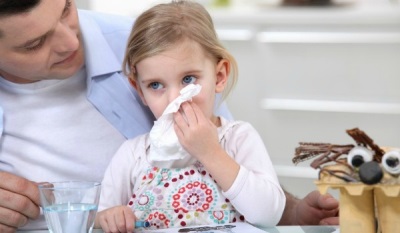
With traechobronchitis (a disease in which both the mucous membranes of the bronchi and the trachea are affected) and the exacerbation of bronchial asthma, the question of prescribing antibiotics is solved in the same way as in acute bronchitis, i.e. entirely at the discretion of the doctor.
In general, antibiotic therapy for bronchitis. According to the established practice, doctors are prescribed only in 10% of cases of all diseases. The remaining 90% are treated with expectorant, mucolytic, antiviral, antihistamines.
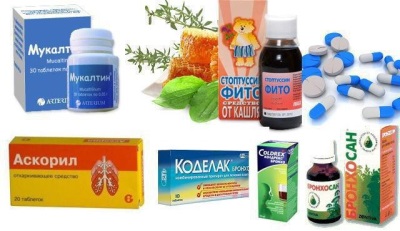
And in the next video, Dr. Komarovsky will tell how to treat bronchitis in a child.
Indications for use
Bronchitis is not such a harmless disease as it may seem at first glance. It is often complicated pneumonia (pneumonia) and bronchiolitis (inflammation of the small bronchi). The most dangerous bronchitis for babies from birth to one year. At this age, according to statistics, more than 200 babies from the control group of 100,000 babies die from bronchitis and its complications.
The reason is that the disease in this age develops very quickly, and there is no time to select alternative drugs. The only sensible solution is antibiotics. Small children up to a year with bronchitis are tried to be treated in stationary conditions, where there is a possibility of round-the-clock monitoring of the child’s condition. It is important not to miss the onset of complications.
Most often, children with a bronchitis sick aged 1 to 5 years. Younger schoolchildren aged from 7 to 9 get sick less often, but they have a higher risk of developing chronic bronchitis.
After weighing the possible risks to the life and health of the child, it becomes clear why doctors "respect" antibiotics in the treatment of bronchitis.
There are several important nuances in which a doctor, even with an uncomplicated form of bronchitis, will still be inclined to prescribe antibiotics to a child:
- If a child has a history of birth trauma, malformations.
- If the child has bright, pronounced signs of respiratory failure during bronchitis.
- If in a sputum of the sick the impurity of pus is well distinguishable.
- If high temperature (above 38 degrees) has been holding for more than three days.
- If a child with bronchitis has noticeable manifestations of severe intoxication.This may indicate a bacterial origin of the disease, because intoxication is the poisoning of the baby’s body with the products of vital activity of harmful bacteria.
Children are usually prescribed antibiotics of the three groups - penicillins, macrolides and cephalosporins.
- Moreover, it is in this sequence. Penicillins have the mildest effects, and they are prescribed first. In addition, most of the drugs in this group have convenient “children's” dosage forms - they can be taken in suspension, solution (his parents are often called syrup), there are self-dissolving tablets. In situations where the disease is complicated, penicillin antibiotics may be given at injections.
- The doctor will prescribe antibiotics macrolides secondarily if the penicillins have not had the desired effect. In other words, if the acute symptoms of the disease do not disappear after 72 hours after starting the antibiotic, penicillin, the medic can replace the drug by choosing a macrolide. Such products have a minimal list of side effects, rarely cause allergic reactions, and therefore are considered relatively safe for the child's body.
- Doctors try to prescribe cephalosporin antibiotics injections. They have a powerful antimicrobial effect, but, alas, they can cause allergies. And the list of contraindications and similar actions in their above. Such drugs are prescribed for complex forms of bronchitis, as well as for purulent obstructive bronchitis, as well as in cases where macrolides and penicillins did not help.
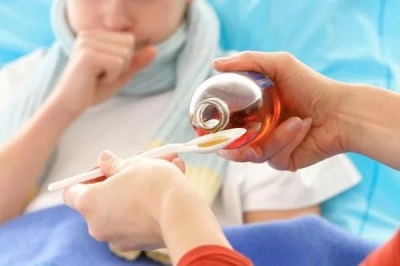
There is another family of antibiotics that can be prescribed by a doctor for bronchitis. These are fluoroquinolones. They are resorted to only in the most extreme cases. If the funds of all other antibiotic groups do not work for the causative agent for a variety of reasons, or if the course of the disease is very serious and threatens the life of the child. Fluoroquinolones are rather “heavy” drugs, it is forbidden to use them for the treatment of children up to 12-14 years old.
On average, the treatment of bronchitis with antibiotics lasts from 7 to 10 days, in some cases up to two weeks.
Most often in the treatment of children's bronchitis are the following names:
- Penicillins: "Ampioks", "Amoxicillin"," Flemoksin ","Ampicillin"," Flemoklav ","Ospamox"," Hinkocyl "," Augmentin "and others.
- Macrolides: "Azitroks", "Sumamed"," Azitral "," Zitrolid ","Azithromycin», «Macropene», «Rovamycin"," Roksitromitsin ", Binoklar", "Clarithromycin" other.
- Fluoroquinolones: "Tsiprolet"," Zipronol ","Levofloxacin».
List of antibiotics for bronchitis
Consider some drugs in more detail:
- Ampioks. This is a combined antibiotic that is quite widely used in the treatment of bacterial bronchitis. The drug has two forms of release - these are capsules and dry matter for solution, which is injected intramuscularly and intravenously. Take the drug you need 4-6 times a day. Capsules for children under 3 years old should not be given. From 3 to 7 years with bronchitis, the daily dose is calculated according to the formula: 50 mg of the drug per 1 kg of weight; children from 7 to 14 years old double the dose. Adolescents older than 14 are prescribed 2-4 grams per day. "Ampioks" injections can be done even for newborns and premature babies. Injections are done 3-4 times a day. The dosage is calculated by the doctor individually for each patient.
- «Flemoxine Solutab». This is a semi-synthetic penicillin antibiotic, often used for bronchitis and pneumonia. It is a pleasure to give it to children, since it is produced in a convenient form - dispersible tablets. They dissolve easily, dissolve and have a pleasant taste.Such a pill can be drunk before meals or immediately after it, or you can dissolve it in water and it will turn out that moms on the forums are often called “syrup”. The dosage is determined by the doctor strictly individually. The average values of the daily dose are as follows: for children up to 1 year, the drug is given 2-3 times a day in an amount of 30-60 mg. medicines for 1 kilogram of body weight, babies from 1 to 3 years old - 250 mg twice a day, children from 3 to 10 years old - 375 mg twice.
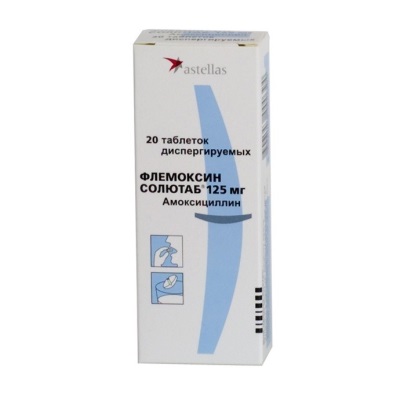
- «Amoxicillin». This is an acid-resistant antibiotic. Injections it does not exist, the drug is intended only for oral administration. Available in capsules and tablets of different dosages, as well as in granules, of which it is easy to prepare a suspension at home. This is the most popular "children's" form of medicine. Suspension can be given to newborns three times a day, the total amount per day - 20 mg of medicine per 1 kg of weight. For children from 2 to 5 years old, the daily dose is 125 mg in three doses, children from 5 to 10 years old are given 5 ml of suspension per day three times.
- Augmentin. This is almost the same "Amoxicillin", only more protected by clavulanic acid. The drug is especially effective in the treatment of chronic bronchitis and bronchopneumonia. Pharmacists are always on sale three dosage tablets, dry matter for self preparation suspensions, and also powders from which do solutions for injections intramuscularly or intravenously. The dosage of the drug produced by analogy with "Amoxicillin." Children under 2 years old can be diluted in half with water, although it is already quite pleasant and easy to drink. In tablets "Augmentin" give children over 5 years. The doctor may prescribe injections to a child at any age if his condition requires it.
- "Hinkocyl". This penicillin antibiotic can be taken in capsules or in suspension. True, in pharmacies there is no ready-made suspension, but it can be prepared from a special powder form of the drug. This antibiotic is contraindicated in children with asthma! Do not give it to kids up to 1 year. The medicine is taken three times a day. The daily dose for children from 1 to 2 years old is 20 mg. drug for every kilogram of weight. Children from 2 to 5 years can be given a fixed 125 mg per day, children from 5 to 10 years old, this dose doubles and is 250 mg.
- «Sumamed». It is an effective macrolide. Well helps with acute bronchitis of bacterial etiology, with the painful manifestations of chronic bronchitis. You can buy medicine in tablets of two dosage types, in capsules. There is also a dry matter for injections and for suspension. Children up to 4-5 years old, it is desirable to take a suspension, older - you can drink pills. The doctor may prescribe injections to a child of any age. "Sumamed" do not give children up to six months. In the treatment of bronchitis, the daily dose of the suspension is calculated as follows: 30 mg of the drug for each kilogram of child's weight. The medicine is taken once a day, the total course of treatment is up to 3 days.
- Azitrox. An antibiotic is a macrolide that has shown itself from the best side in the treatment of complex atypical bronchitis, as it successfully deals with chlamydia. Exists in the form of capsules (for children over 12 years old) and in the form of powder for suspension. It can be taken once a day for 5-10 mg. drug per kilogram of child's weight. To be treated "Azitrox" in suspension can be up to 5 days. The antibiotic has a large list of side effects, so it is not recommended to give children up to 6 months. Children under the age of 12 are prohibited from taking Azitrox capsules. Do not drink the drug at the same time with food.
- "Nitrolide". This antibiotic of the macrolide family successfully copes with the majority of pathogens of bacterial and atypical bronchitis. The drug is available only in capsules. Babies under 3 years of age are absolutely contraindicated. Children older than the drug given once a day, 10 mg of substance for each kilogram of body weight of the child. The average course of treatment is three days.
- "Binoklar" ("Klacid»). This macrolide may be prescribed for any form and degree of bronchitis, as well as for pneumonia. It is available in tablets, powders for suspension of two types of dosage, as well as in the form of dry matter for the preparation of solutions for injection. Binoclar suspension can be given to a child even with milk. The maximum daily dosage is 500 mg. Take an antibiotic after 12 hours (twice a day). The individual dosage is calculated by the doctor. For children under three years of age, the drug is not recommended to be given in tablets, only in suspension. This antibiotic has a large list of side effects and contraindications. Read it carefully and consult your doctor.
- «Suprax». It is one of the most famous representatives of the cephalosporin series. The drug is most often prescribed for the treatment of exacerbations of chronic bronchitis and for acute bronchitis of bacterial origin. On the shelves of pharmacies "Supraks" exists in the form of capsules and granules, from which the suspension is prepared. In tablets and syrup, the medicine is not available. Adolescents over 12 years old are given 400 mg once daily. Suspension is recommended for children up to 12 years old (8 mg. Per kilogram of body weight once a day). 6-10 ml of the suspension is given per day for children from 5 to 11 years old, 5 ml of the medicine are given per day for children 2-4 years old. The maximum dose for infants - 4 ml. per day. The exact amount prescribed by a doctor.
- "Natsef" ("Cefazolin»). This antibiotic of the cephalosporin family can be given to children from birth. However, up to 1 month it should be only in the hospital under the constant supervision of doctors. The antibiotic is produced only as a dry substance for injection. Pediatric dose - 20–50 mg of substance per kilogram of child’s weight per day. If the bronchitis is severe and the child’s condition, the threatening dosage is doubled and given every 6 or 8 hours.
Important: the choice of the drug is the prerogative of the doctor, not the patient, so categorical self-prohibition is prohibited! Since 2017, all of these drugs are available in pharmacies strictly on prescription.
Alternatives
Quite effective in the treatment of bronchitis are inhalation, including antibiotics, which the doctor will prescribe. It is necessary to carry out procedures exclusively using special inhalers (nebulizers).
Usually inhalation is prescribed as an adjunct to antibiotic treatment. Inhalations with mineral medicinal water have proven themselves well. Most often they “inhale” through a nebulizer mucolytic drugs, bronchodilators, antihistamine medicines (for allergic bronchitis), antiseptics and even propolis if it is not allergic, and only with the permission of the doctor who will prescribe the drug based on the type cough The child has.
Recommendations to parents
- Provide plenty of drink. The mucous membrane of the bronchi should not "dry up", especially if the baby is breathing through the mouth because of the stuffy nose. In addition, bacteria cause intoxication. Drinking will help restore water balance and facilitate the removal of toxins.
- In case of severe forms of bronchitis or in case of tracheobronchitis, try to provide your child with bed rest or semi-bed rest. Rest is very important for his recovery.
- If the doctor still prescribed you antibiotics, take them in compliance with all dosages and frequency of administration.
- Do not refuse treatment with antibiotics if the child has become better.Bring the course prescribed by the doctor to the end.
- Do not forget about the prevention of dysbacteriosis, because antibiotics destroy not only pathogenic microbes, but also useful and necessary, such as lactobacilli and bifidobacteria. Therefore, ask your doctor at the same time as antibiotics to prescribe a course of prebiotics and probiotics.
- If the doctor insists on hospitalizing the child, even in the absence of temperature, no need to resist. Some forms of bronchitis, since atypical and fungal bronchitis, are more effectively treated in the hospital.
In the next video, Dr. Komarovsky will tell you when it is necessary for the child to prescribe antibiotics, and when you can do without them.
